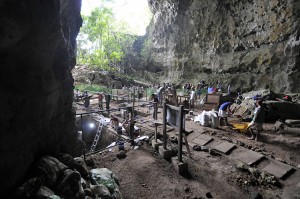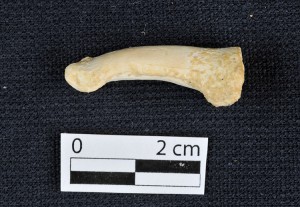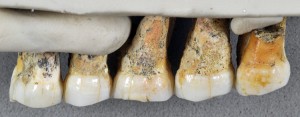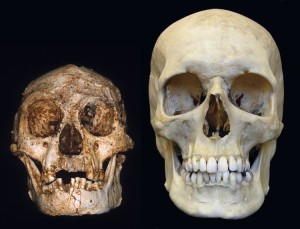New (Old) Humans of the Philippines
Wednesday, May 15th, 2019May 15, 2019
Last month, on April 10, scientists announced that fossils discovered in the Philippines were evidence of a new and previously unknown variety of human that inhabited the islands some 67,000 years ago. The fossils were found at Callao Cave in northern Luzon, the main island of the Philippines. The scientists determined that the fossils represent a new species of human beings called Homo luzonensis.

Scientists found the bones of Homo luzonensis at Callao Cave on the Philippine island of Luzon. Credit: Callao Cave Archaeology Project
The fossil remains of Homo luzonensis were discovered during excavations that took place at Callao Cave from 2007 through 2015. The remains of three individuals included isolated teeth, a foot bone, two toe bones, two finger bones, and an incomplete thigh bone. Scientists observed an odd mix of anatomical features in these few remains. Some of the features are seen in modern humans alive today. Other features, such as highly curved toe bones, are seen in primitive human ancestors called Australopithecines.
The fossils from Luzon add to the growing list of physically distinct varieties of prehistoric humans known across the world—a list that has complicated the view of human evolution. Scientists understand from fossil evidence that physically modern human beings, Homo sapiens, first appeared in the fossil record of Africa around 200,000 years ago. Scientists believe those people eventually spread to inhabit nearly every corner of the globe. However, many regions of Africa, Asia, and Europe were already occupied by prehistoric humans when Homo sapiens arrived.

This foot bone of Homo luzonensis shows unusual curvature. Credit: © Callao Cave Archaeology Project
The Neandertals, a well known group of prehistoric humans, inhabited much of Europe and Central Asia at least 250,000 years ago. Another group, known informally as the Denisovans, is identified by genetic material recovered from a few bones discovered in Siberia (and recently, Tibet) that date to more than 50,000 years ago. Scientist do not know what the Denisovans looked like because fossil remains are so scarce, but their DNA shows they were distinct from both Neandertals and modern humans. These early people are also different from Homo naledi, a mysterious early human species first discovered at Rising Star Cave in South Africa in 2015. Even more peculiar is Homo floresiensis, a diminutive (very small) variety of prehistoric humans known from fossils discovered on the Indonesian island of Flores in 2004.
Scientist now understand that early Homo sapiens shared their world with several other physically distinct varieties of human beings. These ancient people were more like cousins than ancestors to modern humans. Today, only physically modern people remain. The discovery of yet another previously unknown human species demonstrates that prehistoric people came in many shapes and sizes.




